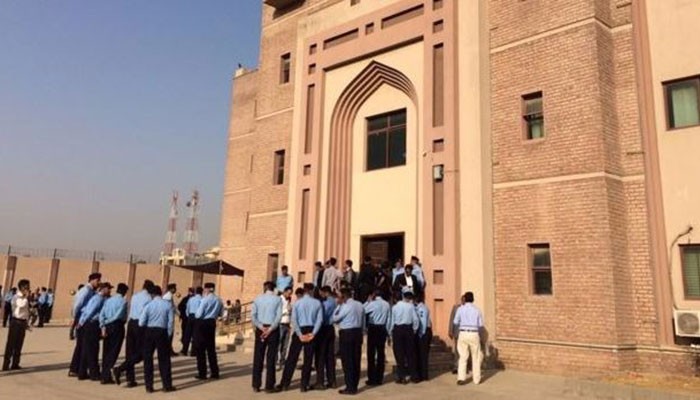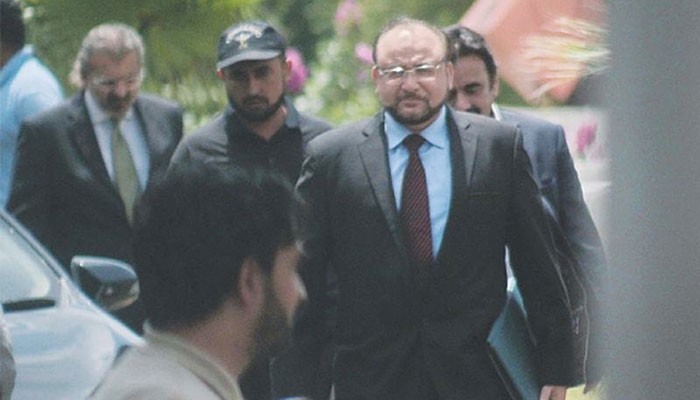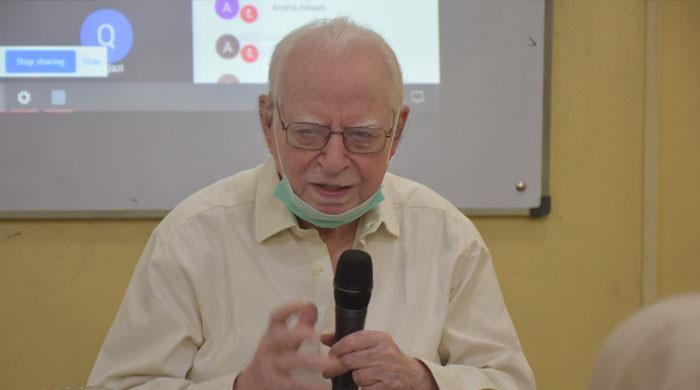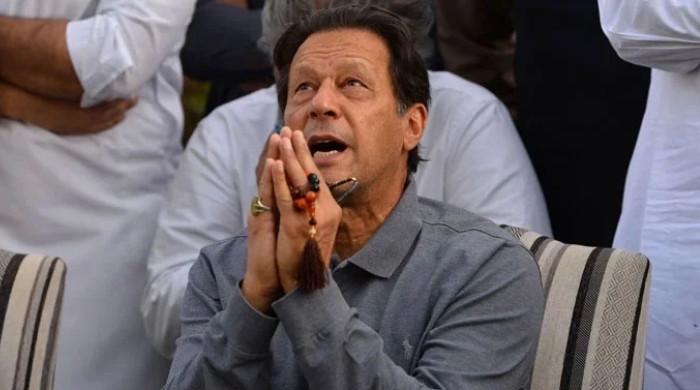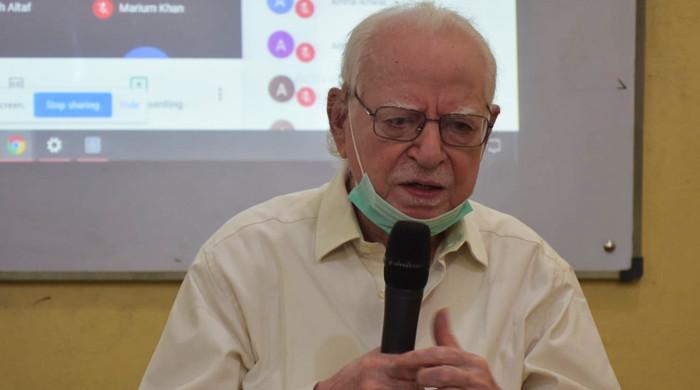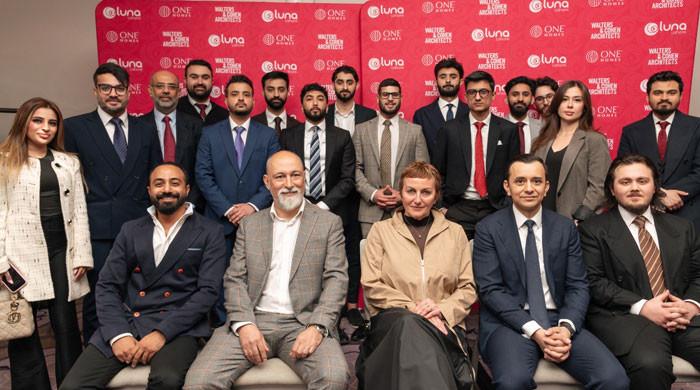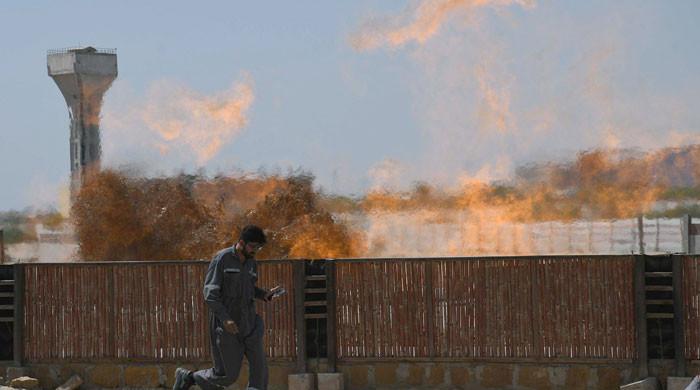Avenfield case: UK forensic expert admits 'Calibri' was available in 2005
NAB recently filed supplementary reference in Avenfield case against Nawaz, Maryam and Safdar
February 22, 2018
ISLAMABAD: A key witness presented by the National Accountability Bureau (NAB), forensic expert Robert Radley, told the court on Thursday that the Calibri font was available in 2005, albeit on a limited scale.
The accountability court, hearing the supplementary reference in the Avenfield case, was conducting corruption proceedings against former prime minister Nawaz Sharif and his family.
The court also recorded the statement of another witness, solicitor Akhtar Raja — via video-link from UK along with forensic handwriting and document examiner Robert W. Radley.
In his findings included in the JIT report, Radley had noted that he "identified the type font used to produce both certified declarations as ‘Calibri’. However, [the font] was not commercially available before Jan 31, 2007 and as such, neither of the [documents] is correctly dated and [appear] to have been created at some later point in time."
Radley, principal of his own firm Radley Forensic Document Laboratory, had claimed that the type font used in trust deeds of two companies was Calibri which was not commercially available before Jan 31, 2007.
NAB Deputy Prosecutor General Sardar Muzaffar Abbasi, Investigation Director Amjad Majeed and the representatives of the accused were present at the Pakistan High Commission in London, where the recording took place and transmitted live to the court.
During the hearing, Radley said that he examined the possible change in the dates on the declaration papers of Nelson and Nescol.
During his testimony before the court, Radley said that the dates were changed on the pages two and three of the declaration.
Radley said that page two and three of both the declarations seemed similar and it is hard to tell the fake from the original.
He explained that 2004 was changed into 2006 in the documents, adding that most likely ‘4’ was in place of ‘6’ in the year.
The documents had four stapler holes instead of two, said the witness, adding that it seemed that to change the documents the corner piece was opened.
He further said that he examined the typing font of the documents as well.
After the The witness was also questioned in relation to the availability of the Calibri font available on Windows Vista.
Calibri font — in which the documents were typed — was not present on a commercial basis until January 31, 2007.
Radley in his testimony said that the declaration could not have been prepared commercially before January 31, 2007.
Haris asked the witness if Vista was released in three different editions, to which the Radley replied in the positive.
The defence counsel then asked if the first proper edition of the operating system was released on January 31, 2007. The witness confirmed the first edition was released on the date and also replied to another question by saying that a pre-launch beta version of the Vista was released in 2005 for IT experts.
Referring to the Calibri font, Haris asked if the pre-launch version had the font present, to which Radley replied and said the font was indeed included, however, it was limited to developers and IT experts.
Questioning further, the defence asked if thousands of people could have had access to the font in its pre-release version. In reply, Radley said that testing was only being conducted on a limited scale.
The hearing will continue on Friday.
Earlier, Nawaz’s counsel Khawaja Haris objected to the presence of NAB officials in London.
The judge remarked that a representative of the accused was also present in court to maintain balance, to which Haris responded that the representatives were just there for observation.
Moreover, former head of the Panama case joint investigation team, Federal Investigation Agency Additional Director Wajid Zia, was in court after having been summoned at the last hearing.
Ordering Nawaz's disqualification in the Panama Papers case on July 28, 2017, the Supreme Court had directed the National Accountability Bureau (NAB) to file three references against the Sharif family and ordered the trial court to wrap up the proceedings in six months.
As the hearing of the case began in the morning, Nawaz, daughter Maryam, and son-in-law MNA Capt (retd) Safdar appeared in court.
During the hearing, Nawaz's counsel Ayesha Hamid pleaded that her client should be exempted from re-appearing today for the hearing of the Avenfield supplementary reference.
The judge asked the counsel to submit a written request in this regard with reasons.
Ruling on the request after the hearing, the judge allowed the exemption but ordered Capt (retd) Safdar to be present in court.
The counsel also argued against the Al Azizia and Flagship supplementary references filed by NAB recently. She claimed that there is nothing new in the supplementary references.
Hamid also pleaded the court to ask the monitoring judge of the case, Supreme Court Justice Ijazul Ahsan, to extend the six-month deadline, saying recording statements of 16 new witnesses will take time and should not be taken lightly.
Maryam 'knew' witness would be NAB's watershed
After completion of the day's proceedings, Maryam posted on social media that she knew the witness "could not lie".
She also said that she had faith in God and knew that the witness NAB was relying on would be "their watershed".
The former first daughter added that she was waiting for this day.
At the last hearing of the case on February 13, Accountability Court-I Judge Mohammad Bashir had rejected the suspects' request to be exempted from appearance owing to a visit to London.
NAB had filed the supplementary Avenfield reference on January 22 this year.
